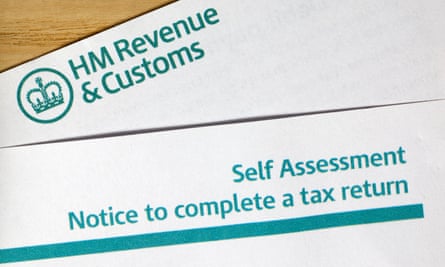Self-assessment tax return: top tips to help you with the process
As we head into the final two weeks of the self-assessment season, the millions of people who still have not done their tax return are being urged to use the coronavirus lockdown as an opportunity to get it finished and out of the way.
HM Revenue & Customs expects 12.1m tax returns to be filed this time around and it is thought that more than 4 million people still have not sent theirs, even though the 31 January deadline is approaching. The number who had filed stood at 7.2 million at the beginning of this week.
Taxpayers have the right to appeal against the £100 penalty charged when a tax return is filed late. HMRC recently revealed it would accept pandemic-related personal or business disruption as a reasonable excuse for missing the deadline, provided you explain how you were affected in your grounds for appeal and submit your return as soon as possible.
How UK taxpayers can avoid falling into the child benefit trapRead more
But it is a much better idea to file on time. If in doubt, there is a tool on the HMRC website where you can find out if you need to complete a tax return for 2019-20.
Here are Guardian Money’s 10 tips aimed at taking some of the pain out of the process.
Do your tax return even if you can’t afford the bill
 View image in fullscreenTaxpayers have the right to appeal against the £100 penalty charged when a tax return is filed late. Photograph: Susan Norwood/Alamy
View image in fullscreenTaxpayers have the right to appeal against the £100 penalty charged when a tax return is filed late. Photograph: Susan Norwood/Alamy
If the pandemic and its effects have caused carnage for your finances, there is help available. Once you have done your 2019-20 return and know how much tax you owe, you can set up a payment plan to spread the cost over up to 12 monthly instalments (provided you owe less than £30,000).
You can use HMRC’s time to pay facility to set up monthly direct debits and this can all be done online. However, interest will be applied to any outstanding balance from 1 February 2021.
“Do it sooner rather than later. If you leave it more than 60 days past the [31 January] deadline, you can’t set up instalments,” says Sarah Coles, a personal finance analyst at the investment firm Hargreaves Lansdown.
To find out more, go to gov.uk/pay-self-assessment-tax-bill/pay-in-instalments.
Get the most from your charity donations
Donating via gift aid means charities can claim an extra 25p for every £1 you give. If you are a higher-rate taxpayer you can claim the difference between the basic rate and the rate you pay via your tax return. Less than one in four higher-rate taxpayers do this “but it can really add up”, Coles says.
Quite often, people forget about donations they made to charityTax specialist Chas Roy-Chowdhury
Let’s say you donated £100 to a charity and it claimed gift aid to make your donation £125. You pay 40% tax, so you can personally claim back £25 (20% of £125).
Quite often, people forget about donations they made to charity, says the tax specialist Chas Roy-Chowdhury. So go through your emails and other records to check.
When filling in your tax form, you do not need to calculate the amount of relief due – simply enter the total amount of payments made via gift aid (it is boxes five and six under “charitable giving” on page TR4 of the tax return). So, using the above example, if you had donated £100, that is what you would write in the box.
If you made any gift aid donations to non-UK charities, enter the total sum in box 12. If you give to charity using a payroll giving scheme, you will already have received tax relief at source.
Make a charity donation now to reduce your tax bill for last year
With self-assessment, you normally only report things on your tax return that relate to the previous tax year. But with gift aid, you can also claim tax relief on donations you make in the current tax year – right up to the date that you file your return.
So you can make a donation now – perhaps to a charity close to your heart that has been hit hard by the pandemic – and use it to reduce your tax bill for 2019-20.
If you want a donation made after 5 April 2020 to be treated as if it was made in 2019-20, you should enter the amount of these payments in box eight on page TR4.
You cannot declare the same donation when you fill in next year’s form, so make sure you keep a record of what you have claimed for.
Don’t miss out on pension tax relief
This is a key area of confusion and could be costing some people hundreds or even thousands of pounds, Coles says.
The way it works depends on what scheme you are in. Net-pay arrangements are used by many traditional workplace pension schemes and don’t require you to do anything to get tax relief. With these, your pension contributions are deducted from your salary by your employer before income tax is calculated, so you get relief on the amount immediately at your highest rate of tax.
However, the rules are different if you are in a “relief at source” arrangement – used by personal pension plans as well as some automatic enrolment workplace schemes. If you are a 20% taxpayer, no further adjustment needs to be made. But higher-rate taxpayers must make a claim via their tax return to receive the extra relief due to them (it is box one under “tax reliefs” on page TR4).
Some big pension schemes operate on a relief at source basis, including Nest (National Employment Savings Trust), which was set up by the government as part of the automatic enrolment revolution and has more than 9.5 million members.
If you are not sure which kind of scheme you are in, ask your HR department or whoever does the payroll for your employer.
Avoid tax penalties on child benefit
 View image in fullscreenDo you claim child benefit? Photograph: ChristinLola/Getty Images/iStockphoto
View image in fullscreenDo you claim child benefit? Photograph: ChristinLola/Getty Images/iStockphoto
Lots of families have been dragged into self-assessment because one or both parents have an income of more than £50,000. Under the government’s high-income child benefit charge (page TR5), these people have their benefit clawed back on a sliding scale.
Sean McCann at NFU Mutual says: “You can become subject to the charge if you moved in with someone who is claiming child benefit, even if they’re not your children.”
It may be too late for this year but there are ways you can reduce the tax hit and, in some cases, escape the charge completely – most notably by paying more into your pension. Contributions made into a company or personal pension scheme will reduce your adjusted net income (your total taxable income, minus things such as pension contributions), which is what the tax charge is based on. For example, you could pay additional voluntary contributions (AVCs) into an occupational scheme.
Be aware of capital gains tax changes
Anyone who sold a UK second home during the 2019-20 financial year has until 31 January to declare any profits made on their tax return and pay the capital gains tax due. The 2019-20 year is the last for which UK residents are required to pay CGT on the sale of properties via the self-assessment system – new rules came in on 6 April 2020 requiring people to use an online service and pay the tax due within 30 days of completion.
You may be able to claim for working from home
If you are one of the millions told by their employer not to come into the office, you may be able to claim something for working from home. However, you will only be able to claim expenses for up to and including 5 April 2020 on the 2019-20 return (the first lockdown officially began on 23 March).
For an employee, working-from-home costs for that period might include items you needed to do your job that your employer didn’t supply, such as a laptop or office chair, and additional household costs such as heating, business phone calls or a new broadband connection. These costs should be included in box 20, “other expenses and capital allowances”, on the employment page of the form.
If you do a tax return, you will have to wait for the 2020-21 form to claim for working from home after 5 April 2020.
Claim tax relief for other job expenses
If you are an employee and have to pay fees or annual subscriptions to one or more professional bodies to carry out your job, you can claim tax relief. Put the fees in box 19 on the employment page. There is a list of approved professional organisations – they include well-known names such as the Law Society, plus lots of others, from the European Association for Potato Research to the Friedrich Nietzsche Society.
Being married can mean a lower tax bill
 View image in fullscreenThe marriage allowance is a government scheme. Photograph: David Sanger
View image in fullscreenThe marriage allowance is a government scheme. Photograph: David Sanger
The marriage allowance (page TR five) is a tax break that lets someone transfer £1,250 of their personal allowance to their husband, wife or civil partner. This reduces the recipient’s tax by up to £250 a year currently. But all three of the following must apply: the couple must be married or in a civil partnership; one partner does not pay income tax or their income is below the personal allowance (usually £12,500); and the other partner pays income tax at the basic rate, which usually means they earn between £12,500 and £50,000. To find out more, go to gov.uk/marriage-allowance.
Don’t forget about or leave out additional income
You can check whether you need to declare, or possibly pay tax on, any casual income you receive. HMRC says its new interactive tool – at gov.uk/check-additional-income-tax – explains what, if anything, individuals need to do if they receive non-PAYE income from – for example – selling items online, doing casual jobs or renting out property. The good news is that you get a £1,000-a-year tax-free allowance for property income and trading income (if you have both, you will get a £1,000 allowance for each).



